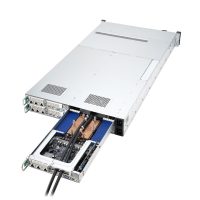(Auszug aus der Pressemitteilung)

[Taipei, Taiwan – September 18th, 2023] – ASRock Rack, the leading innovative server company, today announced its latest server motherboard lineup now supports the AMD EPYC™ 8004 Series processors which extend the 4th Gen EPYC Family into new markets.
The AMD EPYC™ 8004 Series processors bring the benefits of the “Zen 4c” processor core to markets that seek strong performance but also have significant requirements for efficient, dense form factors, limited available power, and quieter operations. “AMD EPYC 8004 Processors are purpose-built to deliver strong performance and energy efficiency in an optimized, single-socket package,” said Lynn Comp, corporate vice president, Server Product and Technology Marketing, AMD. “The combination of impressive performance and streamlined platform componentry of the EPYC 8004 Series CPUs means system builders can offer their customers cost-efficient business-relevant configurations.”
For the users who expect leadership TCO for deployments with AMD EPYCTM 8004 Series-based systems, ASRock Rack introduces three server motherboards SIENAD8-2L2T, SIENAD8UD-2L2Q, and SIENAD10HM3. The SIENAD8-2L2T in a standard ATX (12”x 9.6”) form factor has 4 PCIe5.0 x16 PCIe slots, 1 PCIe 5.0 x8 slots, 2 MCIOs for expansions, and 2 M.2 makes it a good fit for mainstream applications. SIENAD8UD-2L2Q comes in a rather compact form factor, 9.6″ x 10.5″, but still offers the necessary 2 PCIe5.0 x16, 1 PCIe5.0 x8 along with 5 MCIOs. In addition, it is equipped with onboard 25GbE SFP28 which offers a more cost-optimized option for data centers that need 25GbE server connections. The half-width SIENAD10HM3 opens the possibility for high-density server architecture and to handle memory-intensive workloads.






Neueste Kommentare
26. April 2024
19. April 2024
17. April 2024
17. April 2024
5. April 2024
23. März 2024